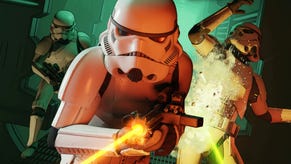Call of Duty: World at War Triple-Format Face-Off
Don't mention the PC version.
Just like Modern Warfare, World at War on both consoles maintains its high frame-rate by reducing the actual amount of resolution displayed in any given frame. So that'll be a base framebuffer of 1024x600, which is then scaled upwards to 720p, before stuff like the HUD and text is added. Anti-aliasing is used to smooth off unsightly edges and helps the resizing effect look more attractive (see The Darkness on PS3 for an example of how zero AA resized can look pretty grim).
World at War had two potential problems as far as I could see it. Firstly, Treyarch used somebody else's engine for this game; realistically we should prepare oursleves for lesser performance bearing in mind they're using tech courtesy of another, arguably better developer. Secondly, the new game pushes the engine with environments far more complex than those seen in Modern Warfare. My initial expectations were that the 360 game would perform much like PS3 Modern Warfare - diminished performance, but mostly undetectable perceptually. As for the PS3 version of the new game, that would be anyone's guess.
Those gut instincts were half-right, but the reality is actually more interesting, and more reassuring for PS3 gamers. It's clear that there's been a very serious attempt at optimisation on both platforms; corners have been cut in both versions but the work has been done intelligently, with practically zero detriment to the overall product. In fact, the most blatant example of paring down in the whole game can be seen here:
It's one of the most graphically challenging areas of the game, and while minor environmental objects are sometimes missing on the PS3 version, this is probably the only really noticeable section. Frame-rate on the more detail-packed 360 game collapses to an average of 41.59fps across the whole scene. PS3's reduction in detail makes it the only clip in the tests that I ran that actually runs marginally smoother than the equivalent 360 video: 42.13fps. That said, over a 39-second clip, 360's improved environments came at a cost of just 19 more dropped frames.
My PC struggled with a dire 29.49fps result, but more on the disappointments of that particular version later.
Scrutinising the captured video from both versions of World at War highlights an array of tiny changes here and there, but the most obvious differences concern texture quality and shadowing. The PlayStation 3 version of the game (like Modern Warfare before it) has better definition in its shadows, whereas the 360's are a touch more blurred in comparison. PlayStation 3 also seems to show what appear to be higher resolutions on items such as soldier uniforms, when viewed close-up.
The reflective textures are far more pronounced than they are on Xbox 360. We saw in the Fallout 3 comparison how the sheen/polish effect was almost totally absent in the 360 version of the game, making some objects appear flat in comparison to its sibling releases. Here it appears to have been used far more sparingly than on the PlayStation 3 version of the game, which in turn appears to be closer to the PC version.
There are plenty of examples of lower texture resolution on PS3 though - the soldier's boot in the video being a clear example. In short, both versions are nipped and tucked here and there in terms of visual quality, with neither having an overall advantage.







